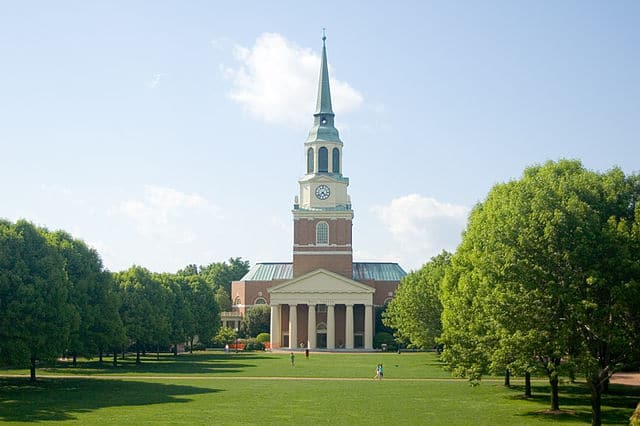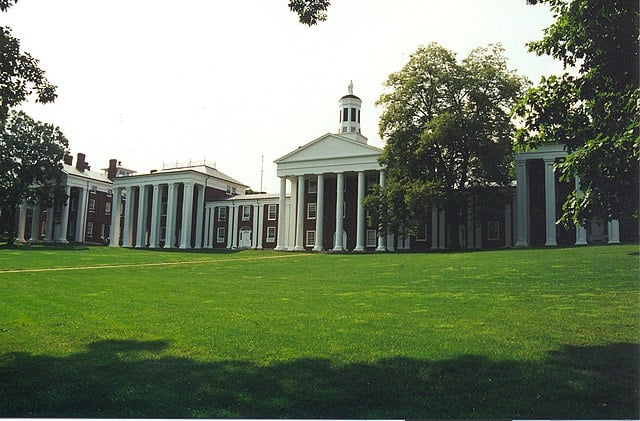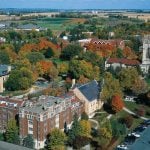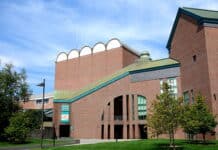Because the first states in the U.S. were on the east coast, it’s no surprise that some of the oldest and most respected colleges in the nation can be found in the area.
Harvard, Yale, and other Ivy League schools have long established themselves as important institutions of research and learning.
More importantly, these schools were the center of the country’s intellectual and cultural elite. As America established itself on the world stage, the research and teaching done at these east coast institutions provided the philosophy and education that shaped the globe.
Since those heady days of the 18th and 19th centuries, America has grown, and so has its institutions.
Today, one can find influential and worthy schools in every state on both coasts. The east no longer has a monopoly on the American mind.
But that doesn’t mean the east coast no longer has anything to offer. On the contrary, schools in the region have continued to grow and develop, evolving to meet new challenges and to push forward American intelligence as it continues to influence world events.
If you would like to be part of these great schools, this list is for you.
Although the list is unranked, each entry identifies the important work being done today by an east coast institution and its connections to a proud history.
This list serves as a reference, highlighting 10 of the best colleges on the East Coast, representing a diverse array of schools, programs, and more.
Massachusetts Institute of Technology (Cambridge, MA)

We begin our list with MIT, perhaps the most famous technology school in the world.
MIT has earned its reputation with an unparalleled history of award-winning alumni and faculty. Since its founding in 1861, MIT has trained or employed 97 Nobel laureates, 26 Turing Award winners, 58 National Medal of Science recipients, 29 National Medals of Technology and Innovation recipients, 50 MacArthur Fellows, 8 Fields Medalists, and more.
With such an amazing track record, MIT can just sit back and relax and still retain its position as a top-notch school.
But the school has no intention of stopping. Thanks to its many institutions and research centers, MIT continues to push forward.
At the Center for Transportation & Logistics, experts work to find new ways to address supply chain problems. The Operations Research Center applies analytical methods, such as statistics and machine learning, to improve society.
Carnegie Mellon University (Pittsburgh, PA)

Founded in 1900 by industrialist and philanthropist Andrew Carnegie, Carnegie Mellon University has always existed to solve large-scale social problems. Looking at the school’s alumni, it’s clear to see that it has succeeded.
In addition to training and working with numerous Nobel Laureates and Turing Award winners, Carnegie Mellon contributed to breakthroughs such as discovering electron diffraction, creating several of the first artificial intelligence programs, and the first wi-fi network, and more.
Today, the school continues this proud tradition of innovation.
Carnegie graduates have founded companies that continue to influence our everyday lives, such as Adobe Systems and Sun Microsystems.
More recently, professor Chrysanthos Gounaris, and doctoral students Hua Wang and Nikolaos Lappas, have developed software that optimizes the development of pharmaceuticals.
Carnegie Mellon researchers Aman Tyagi and Kathleen M. Carley published a report on the relationship between conspiracy theories and climate change.
Swarthmore College (Swarthmore, PA)

Innovation is baked into Swarthmore College, one of the first schools in the nation to offer co-ed classes.
This student approach has led to the creation of groups such as the Swarthmore College Computer Society (SCCS). Completely student-operated and voluntary, the SCCS runs servers used by Swarthmore Community college, as well as many other student groups and organizations. Thanks to the work of the SCCS, Swarthmore College not only can resist cyber-attacks but has also remained at the forefront of the digital frontier.
The school’s summer research initiative encourages students to advance their own studies.
Recent projects include a report on unemployment rates in South Africa, the neural dynamics of high-frequency coincidence detection in the bird sound localization circuit, the process of antibody bindings to HIV spikes, and more.
Wake Forest University (Winston-Salem, NC)

Although it’s located over 100 miles away from North Carolina’s famous Research Triangle, Winston-Salem’s Wake Forest University is one of the unique institutions in the region.
In addition to its own roster of impressive alumni and history of research advances, Wake Forest offers several unique properties and experiences.
Part of the Reynolda Estate, the Reynolda House Museum of American Art features an impressive collection of American art dating back to the colonial period.
Displays include works from artists such as Mary Cassatt, Georgia O’Keeffe, Gilbert Stuart, Frederic Church, and Jacob Lawrence, Georgia.
In addition to being a beautiful and tranquil study space, the 129-acre Reynolda Gardens offers researchers the opportunity to study landscape history, horticulture, environmental sciences, and more.
Additionally, the gardens host numerous public learning events, allowing independent scholars and life-long learners the chance to engage in academic activities.
Vassar College (Poughkeepsie, NY)

One of the first colleges in the nation to grant degrees to women, Vassar College is a historic institution in many ways. The school’s 1000-acre campus features a National Historic Place and two National Historic Landmarks.
The school builds on its excellent past with several research initiatives.
Vassar’s Undergraduate Research Summer Institute provides fifty science students with exposure to the academic research process. Through the Institute, students work closely with Vassar faculty on their research projects.
In addition to a stipend, students receive credit when faculty members publish the work, thereby enhancing their CVs.
The Keck Northeast Astronomy Consortium allows Vassar astronomers to partner with experts from several other schools to study the stars. Thanks to support from the National Science Foundation, students can receive a 10-week paid internship studying at the Consortium.
Virginia Tech (Blacksburg, VA)

The public land-grant university Virginia Tech counts among its alumni four Marshall Scholars, two Rhodes Scholars, 280 Fulbright Scholars, and 38 Goldwater Scholars. But the school’s defining feature is its Corps of Cadets.
A military component of the school’s student body, the Corps of Cadets receive military training in addition to their undergraduate studies. Cadets participate in training activities and receive leadership education, making them ready for service right out of graduation.
With this support, it’s no wonder that Virginia Tech has graduated seven winners of the Medal of Honor, the highest distinction in the U.S. military.
Virginia Tech graduates include Lieutenant William G. Boykin, special forces commander and former Deputy Under Secretary of Defense for Intelligence.
After graduating in 1969, General Lance L. Smith became Commander of the U.S. Joint Forces Command and NATO Supreme Allied Commander for Transformation and Deputy Commander.
Washington & Lee University (Lexington, VA)

Established in 1749 as Augusta Academy, Washington & Lee University is one of the oldest colleges in the country.
The school received support from no less than George Washington himself, who gave the institution an endowment toward the end of his second term, prompting the administration to rename the school in his honor. Following the cessation of the American Civil War, Confederate general Robert E. Lee became the school’s president, prompting the school to be renamed Washington & Lee University.
While that history is important, WLU adheres to its motto, Non Incautus Futuri: “Not Unmindful of the Future.” The school continues to make meaningful advances in the fields of economics, politics, and law.
Recently, WLU formed the Theodore DeLaney Center, an interdisciplinary academic center designed for studying historical and persistent racial issues. The newly-opened Harte Center for Teaching and Learning provides students and faculty resources to meet 21st-century educational challenges.
Florida State University (Tallahassee, FL)

As indicated by its tier-one rating, Florida State University prides itself on its high research and scholarly activity. Operating with a $699.9 million research endowment, FSU is well-poised for breakthroughs that will shape American life for years to come.
One of the school’s more immediate and practical projects involves restoring Apalachicola Bay. Working with an $8 million grant from the non-profit organization Triumph Gulf Coast, the project seeks to revive the oyster industry in the area for ten years.
On the culturally important end, the FSU art department is involved in a project to restore and replace a truss in the historic Notre Dame Cathedral in Paris, which was destroyed in a fire in 2019. The completed project will be displayed in the National Building Museum.
Stevens Institute of Technology (Hoboken, NJ)

When the Stevens Institute of Technology was founded in 1870, it was one of the first technological universities in the U.S. and the first college that taught only mechanical engineering.
Thanks to that auspicious head start, Stevens has made a name for itself as a leader in technological fields.
Not only does the school boast associations with two Nobel Laurates, but it also has received Centers of Excellence designations from the U.S. Department of Defense and the U.S. Department of Homeland Security.
Today, Stevens focuses its research around six foundational pillars, covering AI, biomedical engineering, complex systems, data science and information, financial technologies, and sustainability.
Recent projects include a study on the financial cost of human-caused climate change, published in Nature Communications and applying computational and quantum chemistry to body functions.
University of North Carolina (Chapel Hill, NC)

One of the so-called Public Ivies – public institutions whose qualities rival those of Ivy League schools – the University of North Carolina at Chapel Hill is the only public institution to graduate students in the 18th century.
Over the years, UNC faculty and alumni have included U.S. President James K. Polk, Vice President William R. King, and numerous others who have held important government positions.
They have also won some of the world’s most prestigious awards, including nine laureates of the Nobel Prize and 23 winners of the Pulitzer Prize.
As the center of the Innovate Carolina program, UNC-Chapel Hill works with departments across the campus to meet some of the most pressing challenges of our time. Innovate Carolina features an innovation hub to help researchers and investors advance new ideas.
Thanks to these resources, UNC-Chapel Hill has developed inventions such as new 3D intraoral x-ray technology to provide more detailed imaging with less radiation exposure.














